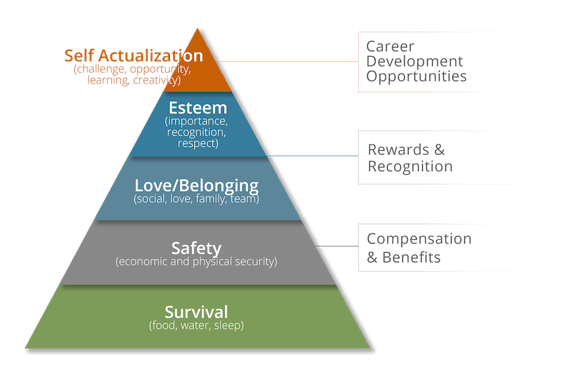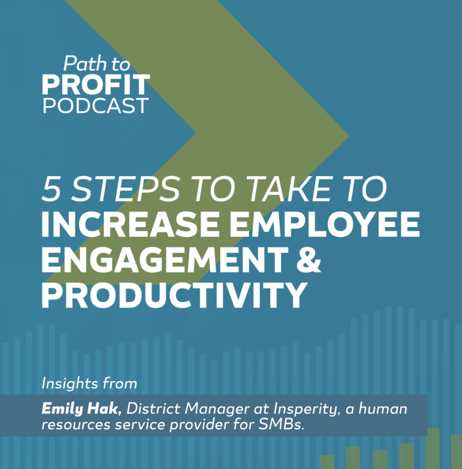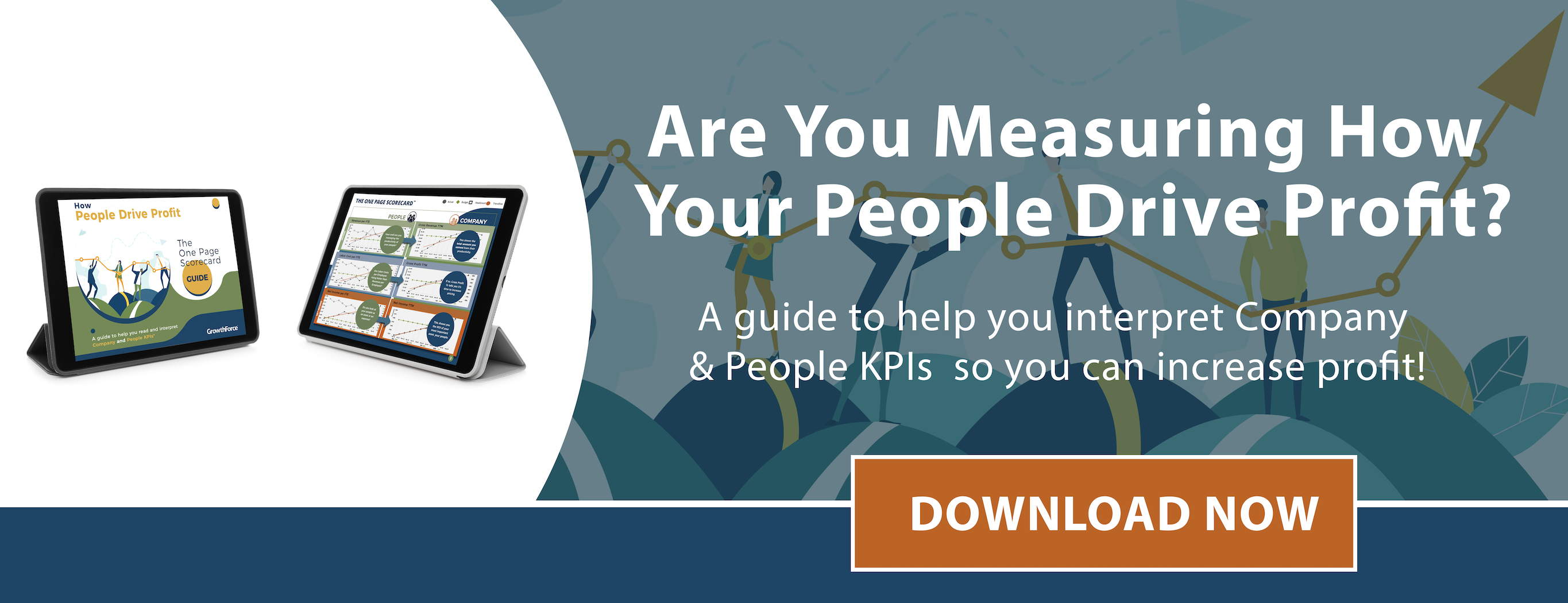5 min read


Every business owner’s nightmare- one of your ‘A’ players walks out the door.
Regardless of the position, employee retention should be one of your top goals. From the individuals answering phones and sorting the mail, to those working as supervisors and filling other high-level positions, keeping the people you have is essential to your company's success and your bottom line.
|
Key Takeaways
|
If you operate with the mindset that employees are a dime-a-dozen commodity, you might be surprised to learn that existing staff are worth much more- and, as a result, high turnover rates will cost you big-time.
Measuring the Cost of Employee Turnover
Employee turnover, especially if rates are high, can be one of the biggest costs your business pays.
The price to replace an entry-level employee can ring in at around 50% of the employee's annual salary. For higher-level positions, the cost of replacement often comes in at a whopping 150% of the employee's annual salary!
Why Is Employee Turnover So Expensive?
When you lose an employee who has to be replaced, your business incurs both direct and indirect expenses associated with the loss of the employee and the hiring process.
Direct costs of turnover include:
- The price of hiring a staffing agency or talent recruiter.
- Advertising expenses required to list the open position.
- The PTO you have to pay out upon employee exit.
- Potential salary increases due to hiring externally.
- The cost of labor and potential overtime when existing employees must cover the lost employee's responsibilities until a replacement is found and trained.
Indirect costs of turnover include:
- Service gaps and interruptions to smooth over with the excited employee's clients.
- The loss of employee knowledge and experience.
- The time that existing employees dedicate to training a new hire.
- Production lag and subsequent losses.
- Increased attention and resources dedicated to employee happiness and company culture following the loss of a coworker.
When all is said and done, the true cost of employee turnover can be astronomical. Fortunately, there are several steps you can take to improve employee retention.
5 Tactful Ways to Improve Employee Retention
1. Hire the Right People
Sure, you probably needed your open position filled last week, and maybe you've found an applicant with a shining resume. But hold your horses — that's no reason to rush your hiring decision. It's essential that you hire the right people for your company and choose people who will fit in with your company culture.
80% of all turnover is due to bad hires. When you hire right, employees stick around. When you rush and hire wrong, you can count on incurring even more employee turnover costs.
According to a study in personnel psychology from Radford University, when employees mesh well with their coworkers, supervisors, and a business's culture, they experience increased job satisfaction, better performance, and are more likely to remain with the company [1].
So, how do you hire the right people?
Aside from doing your best not to rush into hiring someone who might be a poor fit even though their credentials look good on paper, you should absolutely be sure that a new employee will fit in with your company culture before you start drawing up contracts.
According to former Navy SEAL and founder of TalkingPoint Leadership Brent Gleeson, one of the best ways to do this is by asking the right interview questions [2]. When you find a qualified candidate, find out if they're a good fit for your company by getting this information:
- Other than their skills, experience, and training, find out why your candidate thinks they are a good fit for the job.
- Ask them to describe what they think your company culture is like.
- Ask them about the culture at their previous job, how they felt about it, whether they thought they fit in, and why they left.
- Also, find out exactly what they value in an ideal workplace.
After you've discussed these topics, you should have a fair idea of the candidate's values, personality, and workplace expectations. You should be able to determine whether they'll be a good fit for your company.
2. Understand Why Employees Quit Their Jobs
To hold onto your employees and reduce turnover rates, you need to understand the reasons why employees decide to leave their jobs. Otherwise, you won't know what actions to take to ensure your employees stay.
Why employees from a variety of industries chose to leave their previous jobs? A survey [3] found that — other than moving or wanting a different work-life balance — all of the reasons given were related directly to the workplace, work environment, and compensation. This suggests that business leaders and the company cultures they cultivate are overwhelmingly responsible for employee turnover.
Generally speaking, employees choose to leave jobs because they feel undervalued and unfulfilled. They also quit because they lack challenges.
3. Create an Intentionally Positive Company Culture
Now you understand why employees leave their jobs, so you should do what you can to hold onto yours.
A company's goals and values play heavily into its culture. This starts at the top, with the concept of Cascading Goals.
Driving alignment between an organization's goals and employee's roles– Cascading goals– are a crucial part of a lean business model and should be a focal point of your management strategy.
Employees with a clear line of sight and specific goals understand how their objectives directly affect their team, department and the overall company goals.
You have the power to create a positive, rewarding workplace for your employees. So, focus on designing an effective human capital strategy designed to ensure your employees feel valued, are fairly compensated, are recognized for their achievements, and have plenty of opportunities for career development and advancement.
If your employees understand and support your organization’s goals and values, they are likely to be committed to the success of the company, not only to ensure continued employment, but to be a part of that success.
4. Meet All of Your Employees' Needs
Many of the most common reasons why people leave their jobs involve unmet needs. According to Maslow's Hierarchy of Needs, all humans have a set of needs that can be ranked in order of necessity or importance. The needs placed lower on the pyramid must be met before others can be addressed [4].

From bottom (most basic/essential) to top (most rewarding), the needs are categorized as:
→ Physiological - Food, water, shelter, and rest
→ Safety - Physical and economic security
→ Love and Belonging - Social inclusion, family, friends, intimate relationships, and team
→ Esteem - Recognition, respect, accomplishment, and importance
→ Self-Actualization - Realizing/achieving full potential
Use this hierarchy to rank and prioritize the opportunities you choose to offer in the workplace to create a desirable workplace and motivate your employees to increase productivity.
As a business leader, it's essential to consider whether the compensation, rewards, recognition, professional opportunities, and company culture that you offer your employees can satisfy every level of the hierarchy of needs.
- Are your employees able to afford the basic necessities of life?
- Do they feel secure in their jobs?
- Do they fit in with their coworkers and experience a sense of camaraderie as a member of your company's team?
- Do you have strategies in place for rewarding and recognizing your employees' accomplishments?
- Do you offer opportunities for professional advancement, career development, training, and new challenges to help your employees improve themselves and realize their full potential in your company?
For employees to stick around, they need to feel cared for, motivated, and recognized, and building your human capital strategy around Maslow's Hierarchy of Needs will help you ensure your employees are highly satisfied with their jobs. One way to achieve that is by giving your employees international assignments, which can help fulfill their desire to learn new skills, build their confidence and give them an opportunity to work with new teams. To make their international move seamless, you can partner with a relocation specialist that will provide tailored assistance such as handling lengthy paperwork, packing, moving household goods, and making housing arrangements.
5. Don't Underestimate the Power of Recognition and Rewards
Of course, it's important to help your employee’s meet their personal and professional goals.
However, when you're looking at strategies to satisfy your employees' hierarchy of needs, don't overlook the value of recognition and rewards.
Rewarding and recognizing employee achievements not only motivates your top performers, but also their lower-performing peers. You'll have a model for helping low performers increase their productivity. They'll have a clear path to follow and be motivated to receive the same recognition and rewards as their highly successful coworkers.
🎙Listen to the Full Path To Profit Podcast Episode!
Although it's an added cost, going above and beyond offering a decent salary and benefits, is essential to employee happiness and satisfaction. You'll find that the cost of providing further monetary rewards and employee recognition has such a positive impact on employee retention, engagement, and performance, that your ROI will more than make up for the initial expense.
Plus, your bottom line will thank you: Society of Human Resource Managers found that businesses with employee recognition programs saw a 63 % increase in employee productivity and a 58% percent return on their profit margins. [3]
This kind of rewarding increases employee productivity, pads profit margins, boosts the bottom line, and points your business toward success.
Measure the ROI on Your Newly Improved Human Capital Strategy
As you make changes to improve your workplace, company culture, and human capital strategy, you can establish a central management accounting system to track your investment and measure the ROI on the improvements you implement.
As you work to better your company culture, hiring strategy, and employee satisfaction, you'll quickly find that investing in your people is equivalent to investing in your company.
[1] http://nreilly.asp.radford.edu/kristof-brown%20et%20al.pdf
[4] https://www.simplypsychology.org/maslow.html

.png?width=563&height=144&name=New%20GF%20Logo%20(37).png)


